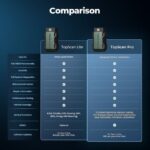While modern vehicles overwhelmingly utilize OBD-II scanners for diagnostic insights, understanding legacy systems, particularly GM’s early diagnostic protocols, remains valuable for automotive enthusiasts and technicians alike. For older General Motors vehicles that predate OBD-II or utilize a transitional OBD 1.5 system, accessing Diagnostic Trouble Codes (DTCs) might seem challenging without a dedicated Gm Obd 1.5 Scanner. However, a rudimentary method exists to retrieve these codes directly from the vehicle’s Data Link Connector (DLC), potentially saving time and resources in initial diagnostics. This process involves using the Malfunction Indicator Lamp (MIL), commonly known as the “Service Engine Soon” light, to flash out the trouble codes.
This technique applies to certain vehicles equipped with a 16-pin Data Link Connector (DLC) and a Powertrain Control Module (PCM). The key to initiating this flash code sequence lies in the DLC, specifically terminal “6,” which serves as the diagnostic terminal, if equipped. This terminal is typically the third from the left on the top row of the DLC connector. To activate the diagnostic mode, terminal “6” needs to be grounded by connecting it to terminal “5,” the internal PCM ground located immediately to the left of terminal “6” on the top row.
Once terminals “5” and “6” are properly connected – often achievable with a simple jumper wire – turn the ignition switch to the “ON” position without starting the engine. If the system is functioning correctly, the MIL (Service Engine Soon light) will begin to flash DTC 12 repeatedly. DTC 12 is indicated by a sequence of flashes: “flash, pause, flash-flash, long pause”. This sequence will repeat three times consecutively. DTC 12 essentially confirms that the diagnostic system is operational and ready to output any stored trouble codes. If DTC 12 is not displayed, it suggests an issue within the diagnostic system itself, requiring further investigation, possibly using diagnostic charts specific to your vehicle’s make and model.
Following the initial output of DTC 12, the MIL will proceed to display any stored diagnostic trouble codes. If fault codes are present, each DTC will be flashed three times. If multiple DTCs are stored in the PCM’s memory, they will be output in ascending order, from the lowest numerical code to the highest. If no trouble codes are present beyond the system check, the MIL will simply continue to flash DTC 12 repeatedly.
While this flash code method provides a basic way to access diagnostic information without a dedicated gm obd 1.5 scanner, it’s important to acknowledge its limitations. Modern OBD2 scanners offer significantly more detailed information, live data streams, and advanced diagnostic capabilities. For comprehensive and efficient vehicle diagnostics, especially on newer vehicles, a dedicated scan tool remains the recommended solution. However, for older GM vehicles, understanding this legacy flash code method can be a useful troubleshooting step or a way to retrieve basic error information when a scanner is not immediately available.

